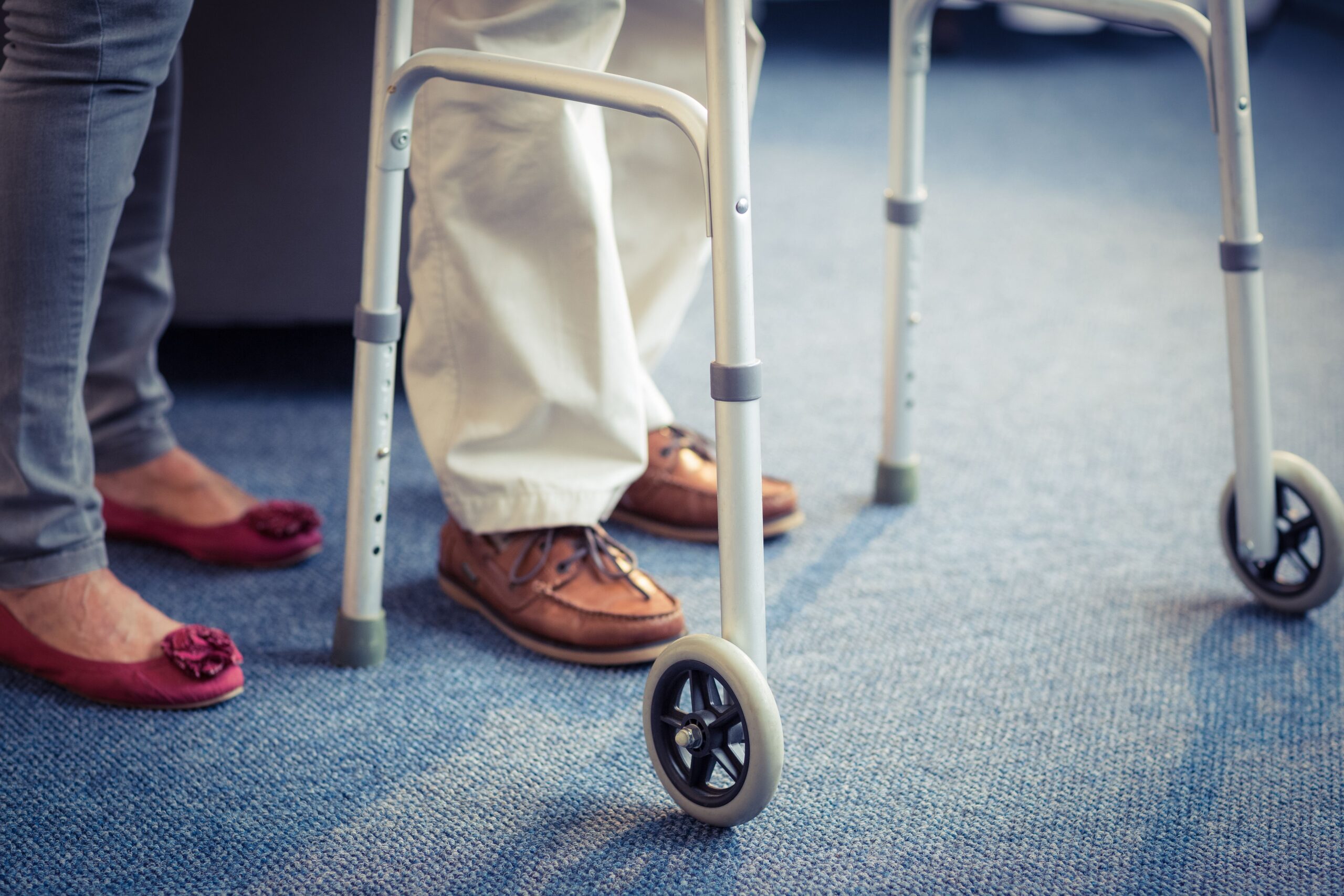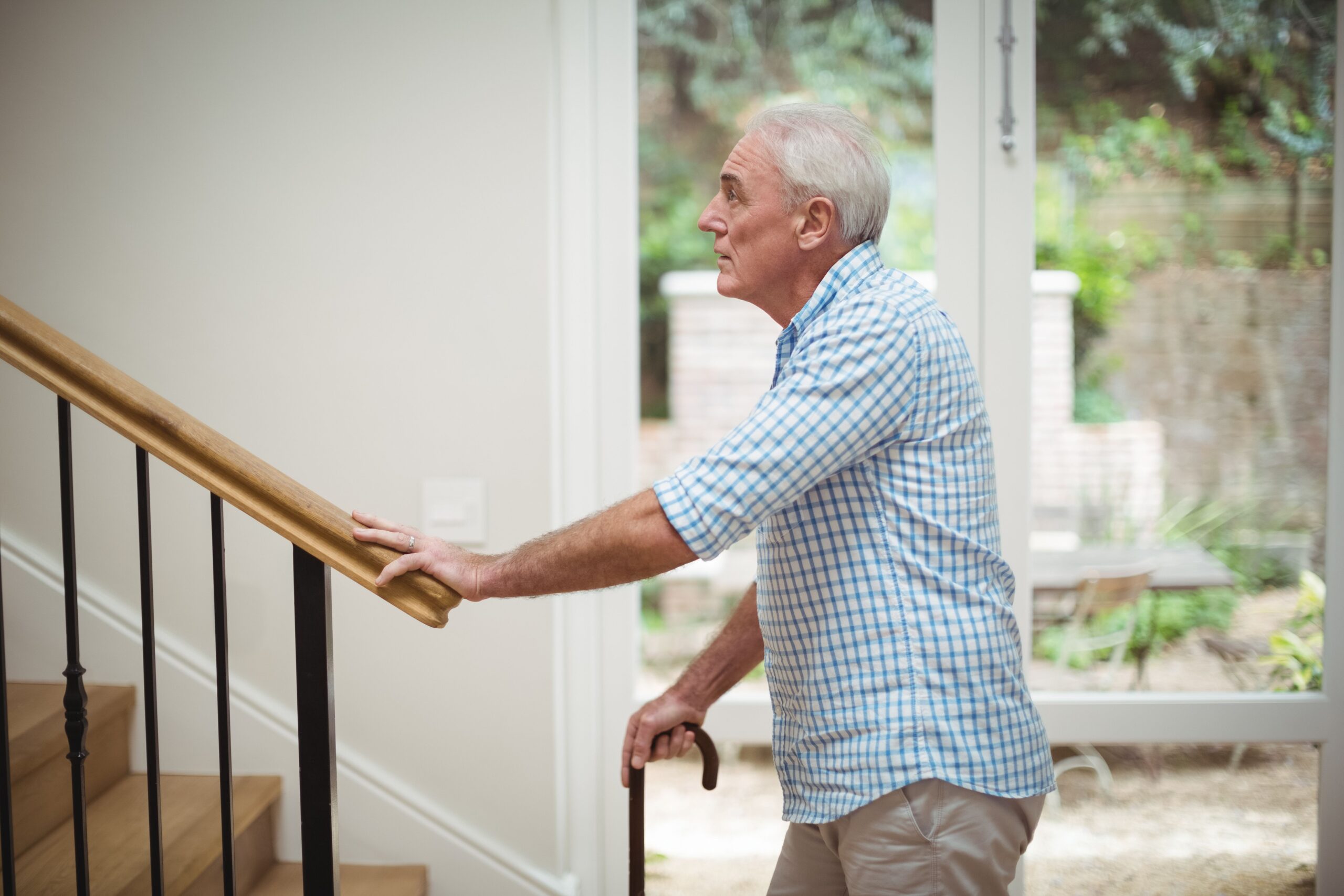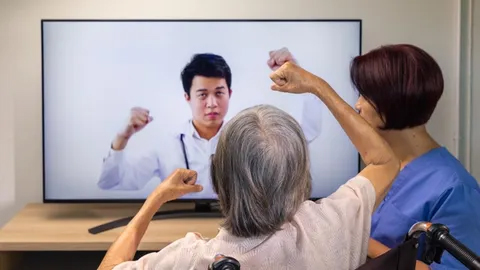How to Prepare for At-Home Recovery from Total Knee Replacement(TKR) Surgery
TABLE OF CONTENTS
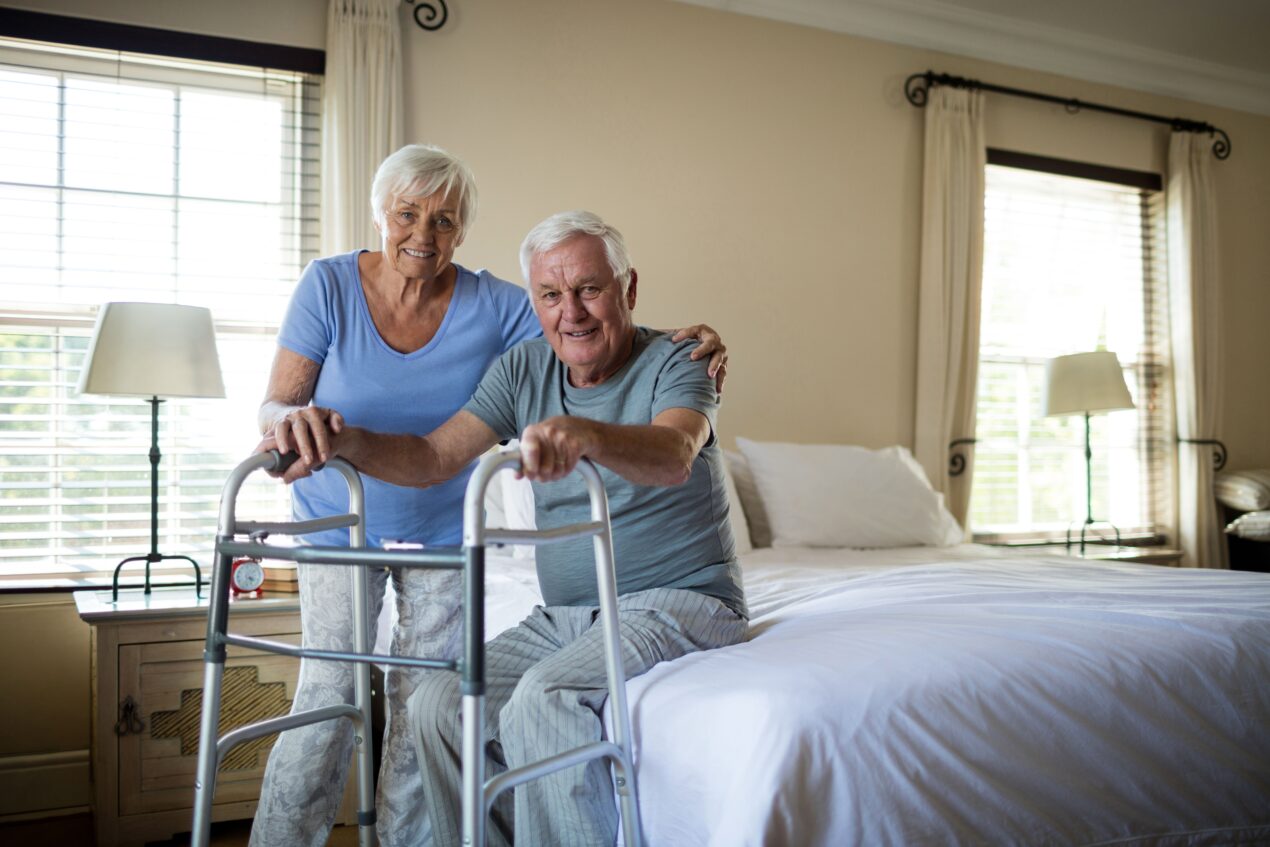
Total Knee Replacement (TKR) is a surgical procedure to replace a damaged knee joint with an artificial implant. It is often recommended for individuals with severe knee arthritis or injury, to improve mobility and reduce pain. Total knee replacement is one of the safest and most reliable treatments in any area of medicine. There are almost 800,000 knee replacement surgeries performed annually in the United States. Rehabilitation at home is now exceedingly common for most of these procedures. Thorough preparation for your home rehabilitation is crucial for a smooth, comfortable, and successful outcome. This comprehensive guide will walk you through the helpful steps to crafting a supportive home environment and effective self-care during your recovery.
01. Preparing Your Home Environment
DECLUTTERING AND SAFETY MEASURES - Before your surgery, assess your home's layout and clear pathways to create adequate space for maneuvering, especially if you'll be using mobility aids that require greater width clearance than usual, like walkers. Remove unnecessary furniture and ensure there's at least 3 feet of space for comfortable movement. Enhance safety by installing handrails in key areas, such as staircases and hallways. In bathrooms, install grab bars near the toilet and in the shower to assist with balance and stability. Good lighting is essential for preventing trips and falls. Make sure all areas are well-lit, especially at night, and consider using motion-activated night lights for added safety.
FURNITURE AND HOME ADJUSTMENTS - Opt for chairs with sturdy backs and armrests to help facilitate sitting and standing. Ensure that the seating is comfortable and at a height where your hips are level with or higher than your knees, to reduce strain. If your bedroom is not on the main floor, consider modifying or creating a temporary sleeping space on the first floor to avoid stairs. Adjust your rooms for accessibility and place commonly used items within easy reach. Organize kitchen items, toiletries, and other essentials within easy reach and in a way that minimizes the need for bending or stretching.
SAFETY IN THE BATHROOM - Consider using a commode chair for added height to your toilet seat to reduce knee flexion, making it easier to sit and stand. Prevent slips and falls by placing non-slip mats in the shower and bathroom. This simple addition can significantly enhance bathroom safety. Consider using shower chairs or benches to facilitate bathing while seated. Handheld showerheads and bath mats add extra layers of safety.
02. Preparing Your Sleep Space
CHOOSING THE CORRECT BED - A bed at an appropriate height reduces strain on your knees when lying down or getting up. Adjust the bed or use risers to achieve the desired height. A firm mattress provides better support for your back and knees. If necessary, consider investing in a mattress topper for added comfort. Strategically place pillows or cushions to support your knee and maintain proper alignment while sleeping. Before your surgery, experiment with different configurations to find the most comfortable setup.
PROMOTING QUALITY SLEEP - Ensure your bedroom promotes relaxation. Keep the room cool, dark, and quiet, and consider using blackout curtains and white noise machines for improved sleep quality. Maintain a consistent sleep schedule, avoid caffeine and electronics before bedtime, and engage in calming activities to promote a restful night's sleep. Coordinate pain medication with your healthcare provider to ensure optimal pain management during the night. This may involve taking medication at specific times to minimize discomfort during sleep.
Many Kinex Medical Company patients are prescribed a Cold Therapy device like the Iceman or our Kinex Thermocomp which they have used while awake or while sleeping to help reduce pain, inflammation, and the need for medication.
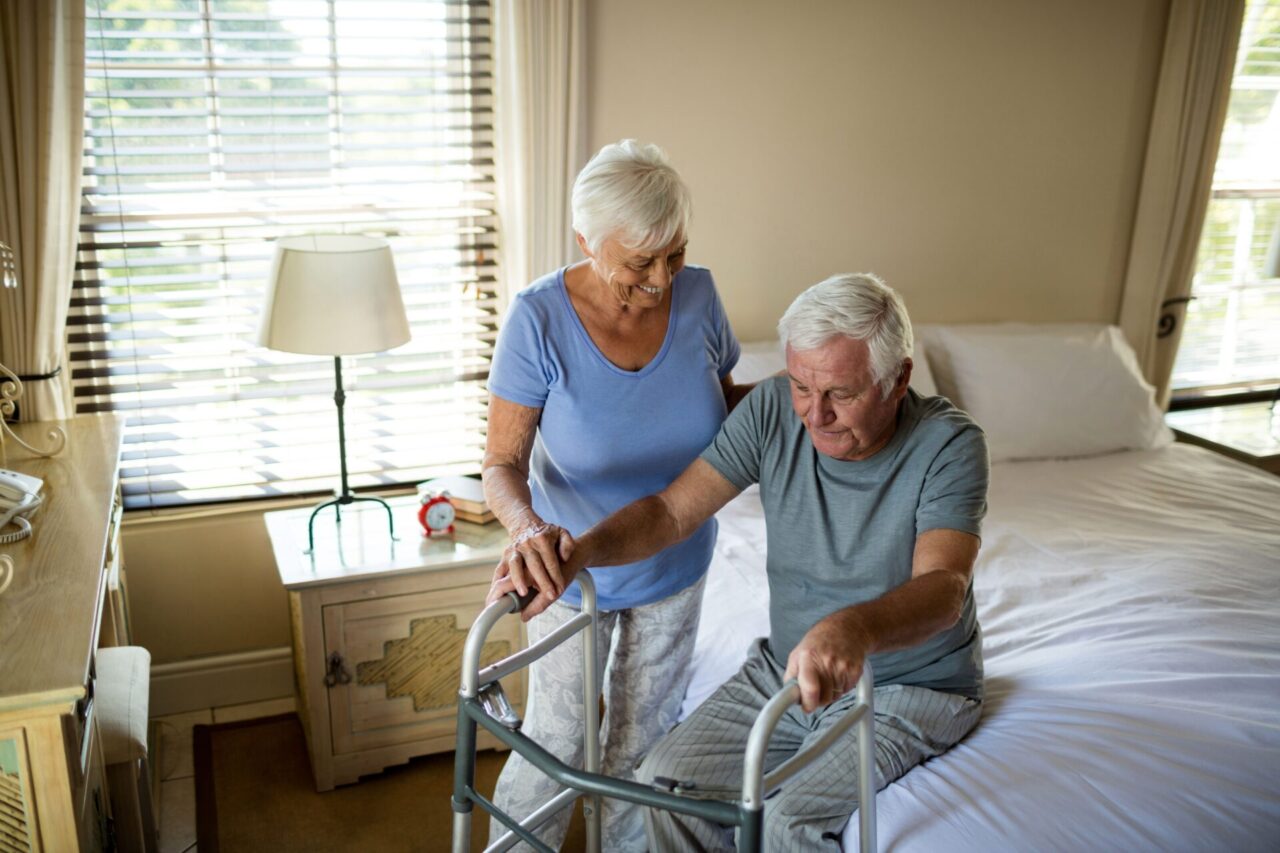
03. Building a Support System
SEEKING HELP FROM FRIENDS AND FAMILY - Clearly communicate your post-surgery needs and expectations with friends and family. Discuss potential challenges and how they can assist you during the recovery period. Create a support schedule to ensure that someone is available to assist you with daily activities, especially during the initial weeks of recovery. Acknowledge the emotional aspects of recovery and share your feelings with loved ones. Having a supportive network can positively impact your overall well-being.
PROFESSIONAL ASSISTANCE - If family or friends are unavailable, Explore the option of hiring professional caregivers or in-home care services. These caregivers can assist with daily tasks, medication management, and emotional support during your recovery. Stay connected with your healthcare providers, sharing updates on your recovery progress and addressing any concerns promptly. Regular check-ins ensure that you receive appropriate medical guidance throughout the recovery journey.
New technology, like the KinexCONNECT Home Rehabilitation Platform, allows your physician easier than ever accessibility to track your rehabilitation progress, guide your daily exercises, and set goals to keep you progressing. Learn More about the KinexCONNECT Home Rehabilitation Platform.
05. Emotional and Mental Well-being
COPING STRATEGIES FOR RECOVERY - Acknowledge and understand the potential emotional challenges associated with recovery, including frustration, impatience, and anxiety. Recognizing these feelings allows for proactive coping. Incorporate relaxation techniques such as deep breathing, meditation, or gentle stretching into your daily routine. These practices can help manage stress and promote emotional well-being. Stay connected with friends, family, or support groups to share your experiences and receive encouragement. Emotional support is a valuable component of the recovery journey.

06. Setting Realistic Recovery Goals
INITIAL WEEK AFTER SURGERY - Follow post-surgery care instructions provided by your healthcare team. This may include wound care, medication management, and follow-up appointments. Understand and adhere to restrictions on certain activities and movements during the initial weeks. Avoid excessive strain on the surgical site to facilitate proper healing. Take pain medication as prescribed and communicate any concerns about pain management with your healthcare provider. Balancing pain relief with necessary mobility is key.
PROGRESSION AFTER WEEKS AND MONTHS - Work with your physical therapist to gradually increase physical activity levels as your knee heals. Follow the prescribed exercise regimen to enhance strength and flexibility. Attend scheduled physical therapy sessions and diligently perform prescribed exercises at home. Consistency is essential for optimal recovery and regaining full mobility. Regularly assess your healing progress with your healthcare provider. Discuss any changes or concerns, ensuring that your recovery remains on track.
07. Addressing Common Concerns and Questions
PAIN MANAGEMENT - Recognize the difference between expected post-surgery discomfort and concerning pain. Report any unusual pain patterns to your healthcare provider for evaluation. Collaborate with your healthcare provider to establish a medication management plan. Adjust medication schedules as needed to optimize pain relief while minimizing side effects.
SLEEP DISRUPTIONS - Implement strategies to address sleep disruptions, such as adjusting sleeping positions, using pillows for support, and maintaining a consistent sleep routine. Invest in comfortable pillows and bedding to create a conducive sleep environment. Adjust room temperature, use blackout curtains, and minimize noise to promote uninterrupted sleep. If sleep disruptions persist, communicate with your healthcare provider. They can offer insights into potential solutions or adjustments to medication that might aid in better sleep.
WALKING MILESTONES - During the first two weeks after knee replacement, focus on short, assisted walks within your home. Use mobility aids as recommended by your healthcare provider and gradually increase the distance as comfort allows. Around the third week, venture outdoors for short walks, preferably on flat surfaces. Pay attention to your gait and use assistive devices as needed. Progress at a pace that feels comfortable for your healing knee. The ability to climb stairs typically improves gradually. Follow your physical therapist's guidance on stair climbing, starting with minimal steps and gradually progressing. Ensure handrails are available for support
DRIVING AFTER KNEE REPLACEMENT - Consult your healthcare provider before resuming driving, usually around 4-6 weeks post-surgery. They will assess your mobility and overall readiness to operate a vehicle safely. Once cleared, ease back into driving by starting with short trips in low-traffic areas. Ensure your knee is comfortable and your reaction time is not compromised.
MANAGING PAIN FLARE-UPS - Be attentive to activities or movements that may trigger pain flare-ups. Identify these triggers and modify your routine or seek guidance from your healthcare provider on managing these situations. Ice and heat therapy can be effective in alleviating pain and reducing inflammation. Use ice packs or warm compresses as recommended by your healthcare team to address specific pain concerns.
RETURNING TO EVERYDAY ACTIVITIES - Gradually reintegrate everyday activities, such as household chores. Listen to your body, avoid overexertion, and prioritize activities that align with your recovery goals. If needed, seek assistance with heavier household chores during the early stages of recovery. Delegate tasks or consider professional help to minimize strain on your knee.
08. Potential Complications and When to Seek Help
MONITORING SURGICAL SITE AND WOUND CARE - Regularly inspect the surgical site for any signs of infection, such as increased redness, swelling, or discharge. Promptly report concerning changes to your healthcare provider. Follow recommended wound care practices, keeping the incision area clean and dry. Use any prescribed ointments or dressings as directed and avoid exposing the wound to excessive moisture.
ADDRESSING SWELLING AND BRUISING - It's normal to experience swelling and bruising after knee replacement. Elevate your leg, use cold packs, and adhere to prescribed medications to manage swelling effectively. Inform your healthcare provider if swelling becomes severe, asymmetric, or accompanied by increased pain. These could be signs of complications requiring prompt attention.
DEALING WITH PERSISTENT PAIN - During your recovery, recognize the difference between the expected discomfort and persistent, unmanageable pain. Communicate openly with your healthcare provider about any persistent pain issues. If persistent pain persists, your healthcare provider may conduct further diagnostic evaluations, such as imaging tests, to identify potential issues with the implant or surrounding structures.
MANAGING MENTAL AND EMOTIONAL WELL-BEING - Emotional challenges are common during recovery. Seek support from friends, family, or mental health professionals to address feelings of frustration, anxiety, or depression. If needed, consider professional counseling or therapy to navigate the emotional aspects of recovery. Mental well-being is integral to overall recovery success.
09. Conclusion
REFLECTING ON YOUR RECOVERY JOURNEY - Acknowledge and celebrate milestones in your recovery journey, both big and small. Reflect on your progress and recognize the resilience you've shown throughout the process. Maintain regular communication with your healthcare providers even as your recovery progresses. Scheduled check-ups and open dialogue ensure ongoing support and address any emerging concerns.
EMPOWERING OTHERS THROUGH YOUR EXPERIENCE - Consider sharing your recovery experience with others facing similar challenges. Your insights and tips can provide valuable guidance and support to individuals undergoing total knee replacement and at-home recovery. As you regain mobility and resume daily activities, look for opportunities to support others in their recovery journeys. Acts of kindness and shared experiences contribute to a supportive community.
In summary, effective at-home preparation for total knee replacement recovery involves thoughtful planning, collaboration with healthcare professionals, and a commitment to self-care. By implementing the strategies outlined in this guide, you can enhance your recovery experience and lay the foundation for a successful return to an active and fulfilling life.

10. Links & Articles
How to Prepare for Recovery After Knee Replacement Surgery Posted by: Healthline.com
Total Knee Replacement Exercise Guide Posted by: OrthoInfo.aaos.org
Getting your home ready - knee or hip surgery Posted by: Medlineplus.gov
Innovations in TKA Post-Operative Recovery Posted by: Kinexmedical.com
